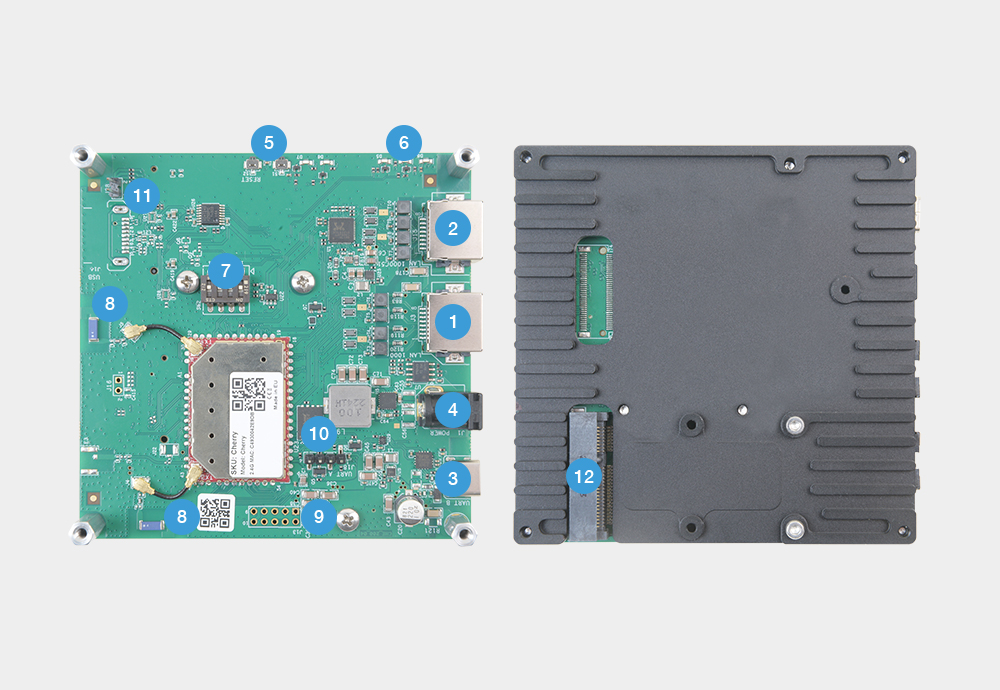Quick User Guide
| 1 - 1Gbps Ethernet port | 7 - Bootstrap switch (Refer to datasheet 11.5) |
| 2 - 2.5Gbps Ethernet port | 8 - Antennas (Wi-Fi 2.4GHz) |
| 3 - USB Type C socket (console+ power) | 9 - GPIOs (Refer to datasheet 11.6) |
| 4 - DC power jack (12-24V) | 10 - UART connector (Refer to datasheet 11.5 Note) |
| 5 - Switches (Refer to datasheet 11.3) | 11 - PCIe +5V connector (Refer to datasheet 11.7) |
| 6 - LEDs (Refer to datasheet 11.4) | 12 - Mini-PCIe connector (single lane, PCIe 2.0) |
Power on
Cherry can be powered by either a USB Type C connector or by DC barrel jack. A LED (marked D8 on our development kit) should light up upon powering. Give it at least 30 seconds to boot.
USB Type C port
USB Type C port has two purposes. One to power up the device, two to have a serial comunication with the module. However simple USB 2.0 from the computer will not be enough to power on and keep the device under the maximum load. It is recommended to use adapters which could provide at least 1.5A @ 5V.
DC barrel jack
Alternatively, you may connect it to the 12-24V DC barrel jack which is marked 4 in the illustration above. However you can not used USB Type C and DC barrel jack at the same time. If you want to use DC barrel jack and have serial communication, you will need to rotate few resistors (refer to datasheet 11.7)
Link up
Now that we powered Cherry on, let’s connect it via lan port. Configure your computer's network interface with 192.168.1.254 IP address and 255.255.255.0 netmask. Make sure that other devices on your network are not using this subnet! If everything is done correctly you should be able to reach Cherry via the default IP address of 192.168.1.1
Log in
Cherry is now reachable, so let’s login via ssh:
ssh root@192.168.1.1
Or via telnet:
telnet 192.168.1.1
Or via your internet browser with the following URL:
http://192.168.1.1
By default Cherry does not have password set so when logging in only enter username “root” and leave password field empty.
